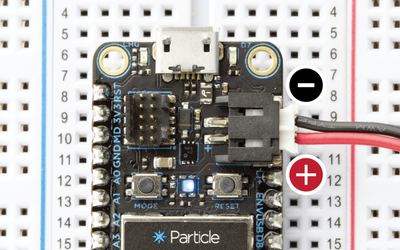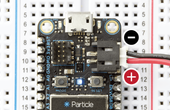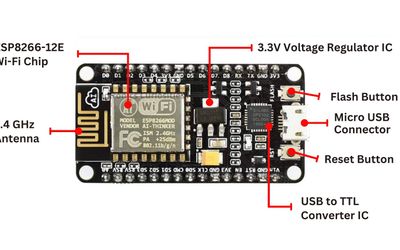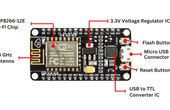Analog Devices - Maxim MAX32672 MAX32672 Ultra Low-Power Arm Cortex-M4F Microcontroller
Tiny, Ultra Low-Power, High-Reliability Microcontroller with 12-bit ADC
Technical Specifications
| Product Type | Low Power Microcontroller |
| Processor | ARM Cortex-M4 |
| ADC Resolution | 12-bit |
| GPIO Pins | Up to 42 |
| Communication Interface | UART, SPI, I2C |
| Memory | 1MB Flash, 200KB SRAM |
| Packaging | TQFN (40-pin and 56-pin) |
| Temperature Range | -40 to +105 degrees Celsius |
| Applications | Industrial Sensors, Motor Control, Medical Devices, Optical Communication |
Overview
MAX32672 is a high-efficiency microcontroller featuring a low-power Arm-M4 Processor that can go up to a 100 MHz FPU. The microcontroller features multiple communication interfaces like UART, I2C, and SPI. It provides speed flexibility with numerous internal and external clocking options enabling it to communicate with a wide range of sensors and microcontrollers for industrial-grade applications.
It also offers flexible power management features such as CoreMark® which maximize battery up time to facilitate long-term applications. Moreover, it’s available in multiple TQFN packaging with varying serial communication modules and GPIOs for scalable applications. It also features a 12-bit 1MSPS ADC with an On-DIE temperature sensor for high-resolution sensor data.
Powerful ARM Cortex-M4 Processor with FPU Engine
The MAX32672 microcontroller features a powerful ARM Cortex-M4 processor with an FPU engine ensuring high-efficiency signal processing for resolution-sensitive applications. It boosts The computational capabilities of the FPU DSP support single instruction multiple data (SIMD) DSP extension. It provides low-power and low-cost processing features including:
Two Parallel Media Access Controllers (MACs) - independent control of data transmission and reception over the network by each MAC enables the MAX32672 to handle multiple network connections and data streams simultaneously.
Two Parallel 16-bit Add/Sub - allows the microcontroller to handle two 16-bit mathematical operations simultaneously. It indicates exceptional computation power which is essential in high-speed systems
Moreover, the microcontroller features versatile memory with an internal Flash memory of up to 1MB. The Flash memory features error correction and follows a dual-bank scheme. It allows the device to execute while writing and handling live FW upgrades.
It also features an internal SRAM of 200KB which provides low-power retention. The SRAM may be configured to 160KB with Error Correction Coded for enhanced system reliability. This memory is divisible into granular banks for a flexible architecture and minimizing power consumption.
Flexible Communication Options with High-Speed Peripherals
The MAX32672 microcontroller facilitates a wide range of peripherals and computing devices with its flexible communication options. It maximizes the communication bandwidth, enabling the microcontroller to seamlessly interact with sensors, actuators, and communication modules.
For instance, it features the 3.4Mbps I2C communication interface that supports up to 3 Master/Slave peripherals. Likewise, it can support up to 3 four-wire UART peripherals and up to 3 50MHz SPI peripherals. Also, there is support for one I2S Master Slave device for digital audio processing.
Moreover, the Successive Approximation Register (SAR) ADC facilitates up to 12-bit analog-digital conversion. It’s a 12-channel ADC enabling a wide range of sensors to interconnect with the microcontroller in any industrial environment.
Additional features include up to six timers with up to 2 low-power timers capture/compare, and pulse width modulation capabilities. The microcontroller features a tiny TQFN packaging with 40-pin (5mm x 5mm) and 56-pin (7mm x 7mm) variants allowing for scalable application development for medical and industrial devices.
Where to find it

Mouser Electronics
Mouser Electronics is a worldwide leading authorized distributor of semiconductors and electronic components.








